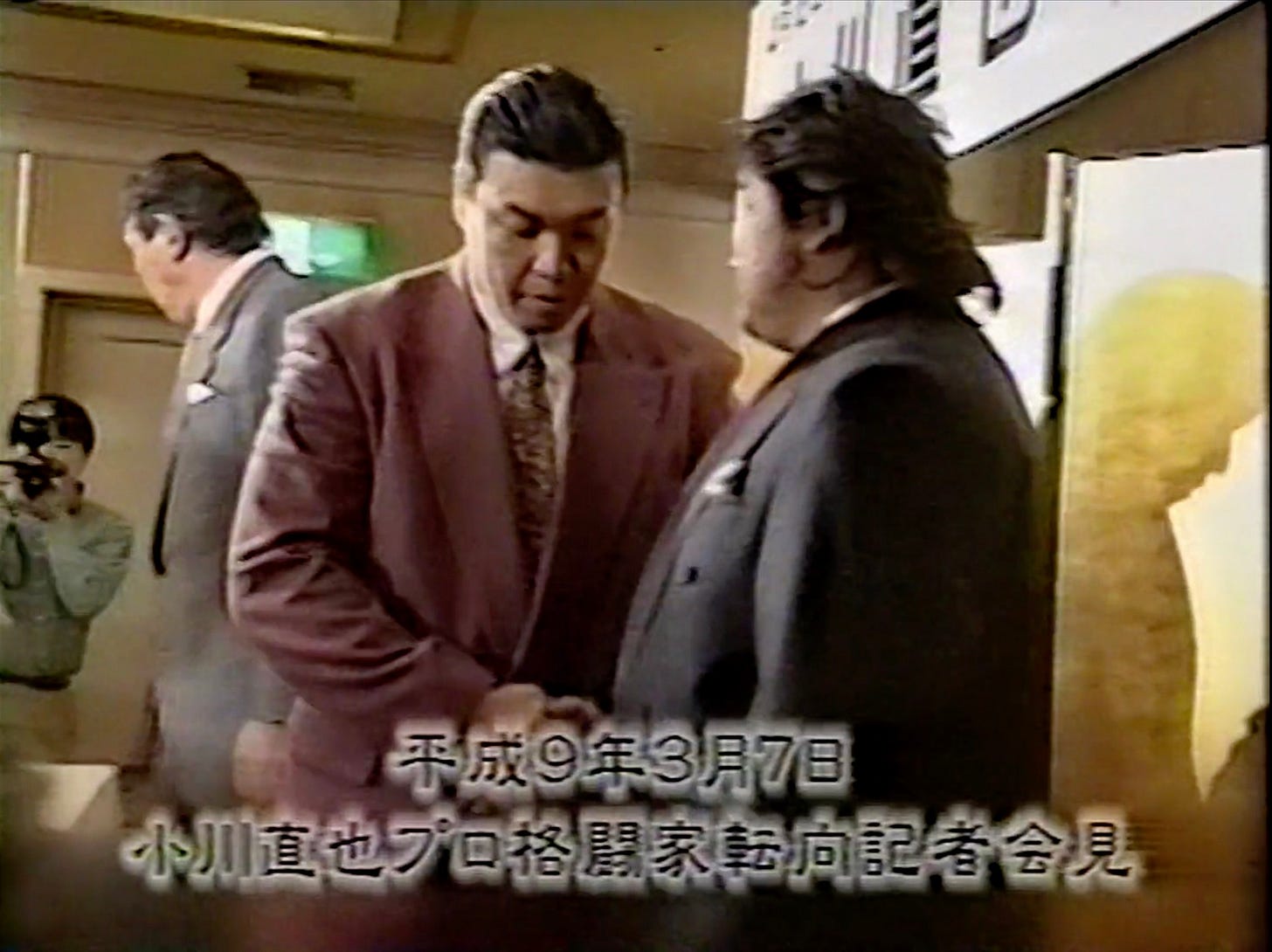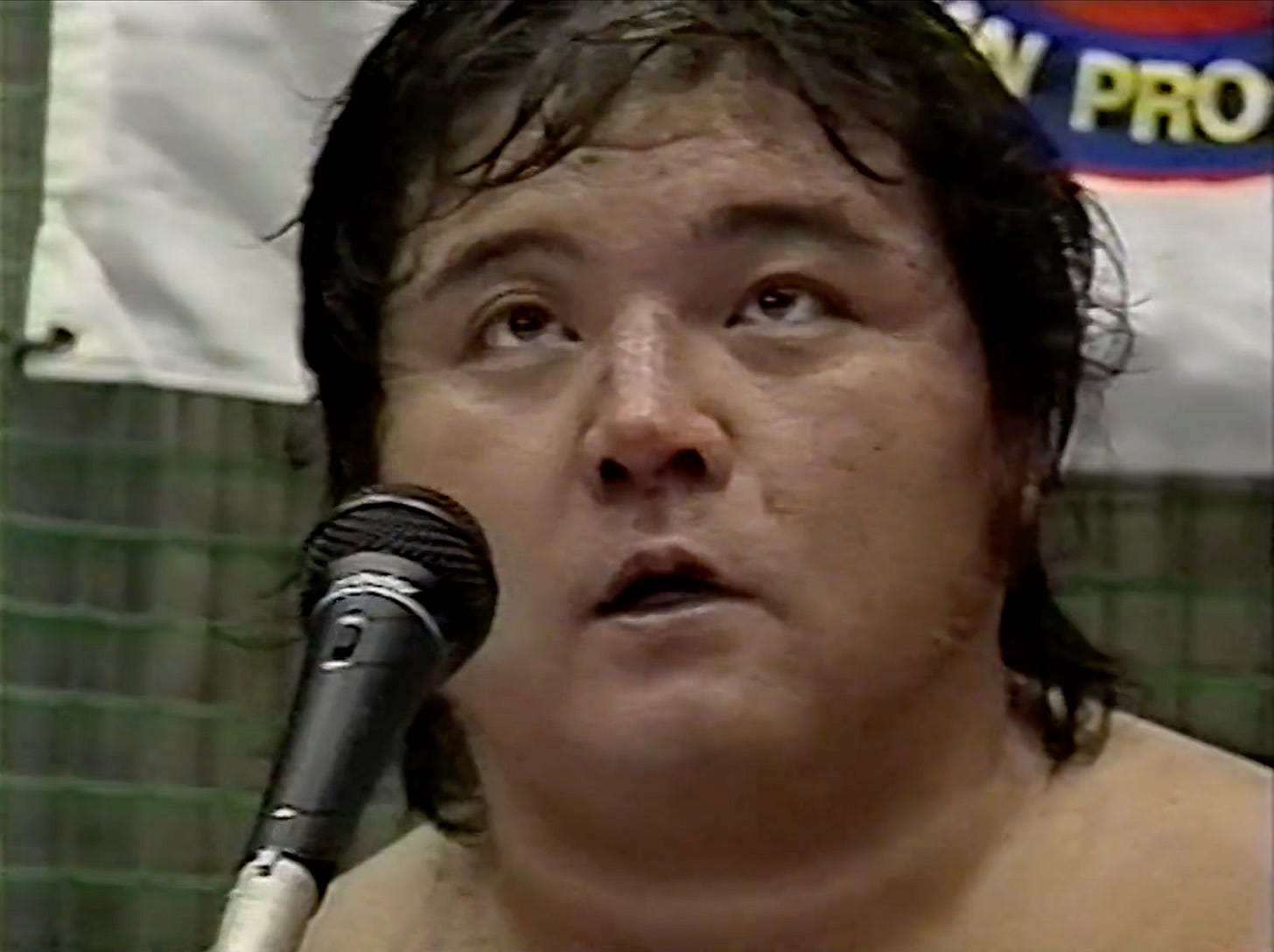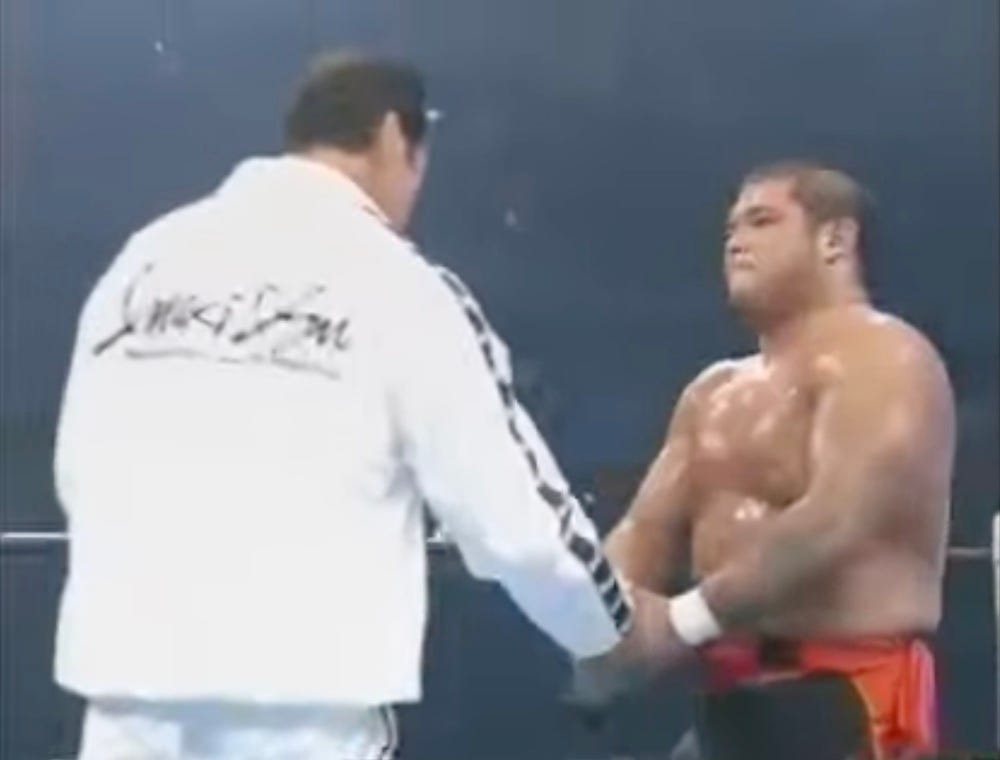Shinya Hashimoto vs. Naoya Ogawa Feud Deep Dive
An infamous shoot incident highlights this war. Get a match-by-match breakdown of NJPW's The Deadly Battle VHS plus their final singles bout.
New Japan Pro-Wrestling (NJPW) and January 4th at the Tokyo Dome has become one of the major ongoing traditions in professional wrestling. Known as Wrestle Kingdom since 2007, the tradition began in 1992. The 1999 edition featured a shocking occurrence when Judo silver medalist Naoya Ogawa started fighting for real against the 3x IWGP Heavyweight Champion, Shinya Hashimoto allegedly under the orders of Antonio Inoki. What led up to it? What were the matches like?
I recently came across a 2000 NJPW VHS release entitled The Deadly Battle (or The Deadly Fight depending on the translation) that chronicles much of the Hashimoto and Ogawa rivalry that was a massive story at the time. I’ll sprinkle in some of the context that I could find throughout to help better understand why this all happened. As always, if you can provide more detail or any corrections, please comment!
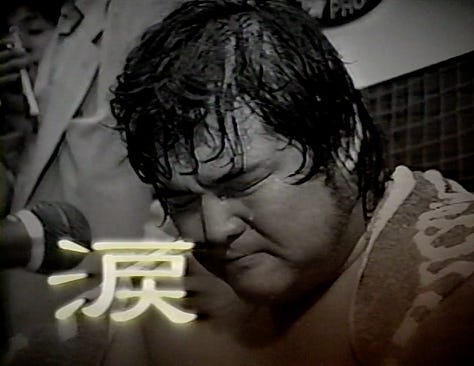


The video open is very dramatic, taking us back to 1997 when Shinya Hashimoto and Naoya Ogawa met carrying the banners of professional wrestling and judo.
“It was a fierce battle that determined our fate.”
When the two first faced off in April of 1997, Shinya Hashimoto was a 3x IWGP Heavyweight Champion, the reigning title holder, and one of the biggest draws in Japan. He rose to prominence as one of the “Three Musketeers” alongside Masahiro Chono and Keiji Mutoh from the 1984 Dojo Class. Reports at the time indicated that he was set to face Ken Shamrock at the April 12th Tokyo Dome show but that deal fell through and a replacement was needed. That replacement came in the form of the 1992 Judo Olympic Silver Medalist, Naoya Ogawa. Despite getting a relatively late start in judo at age 16, Ogawa was highly successful. He retired from the sport following the 1996 Olympics, was recruited by Antonio Inoki and trained under Satoru Sayama.
April 12, 1997 NJPW Battle Formation at the Tokyo Dome: IWGP Heavyweight Champion Shinya Hashimoto vs. Naoya Ogawa
We see the press conference to announce the match with Ogawa suited up and looking very sharp. His feeling is 'Are you going to kill me? Because I’m going to kill you.' Inoki looms large behind Ogawa as he oversees his training. A point is made that Ogawa is going to keep using the so-called banned techniques of judo. The promotion is all fight-based with pro wrestling versus judo. That was something that worked very well for Inoki during his own career and he’d go back to quite often to mixed results.
Hashimoto and Ogawa arrive, and the atmosphere feels big time. All that’s left for them is to go out and do it. Hashimoto feels he’s done everything he can to prepare as an athlete. They reference Rikidozan vs. Masahiko Kimura which is a famous 1954 match where Rikidozan shot on the famed judoka. Naoya Ogawa makes the walk first wearing his gi and it feels very ominous. Shinya Hashimoto is out next and there’s a great fade-in shot to him coming out. This has a PRIDE FC, big fight feel to it with superb camera work. Inoki is at ringside while Kensuke Sasaki is in Hashimoto’s corner.
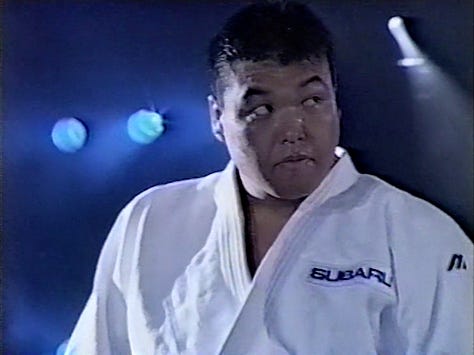
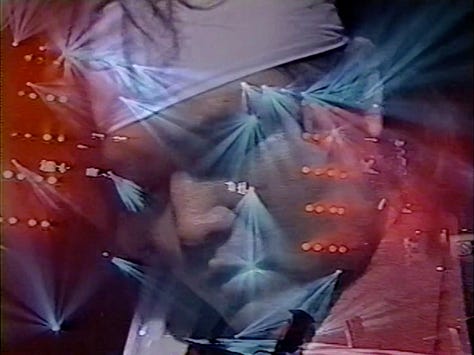
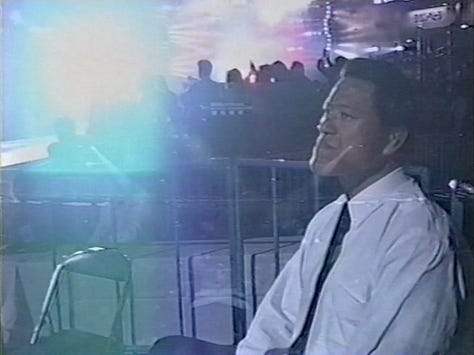
Ogawa and Hashimoto square off like a fight and Hash lands well with some leg kicks. Ogawa clinches and the Tokyo Dome comes up in anticipation. He gets an armbar but Hashimoto blocks it. There’s a great fade to Inoki. Hash works his way out, sending Ogawa reeling with some big kicks. He’s smacking the hell out of Ogawa but Ogawa is able to grab Hash, slam him down and go back to the armbar.
This works well because Ogawa is so one dimensional and we’re still in that period of specialists in MMA. He does a great job of selling the kicks and portraying that he doesn’t want to be hit.
There’s a great moment where Hashimoto trips Ogawa and Ogawa rolls out of the ring to big boos. Hashimoto’s nose gets bloodied up at some point which adds to the drama. There’s a big faceoff and Hashimoto scores big with kicks, neck chops and a nice backdrop driver that Ogawa’s fighting the whole way. Ogawa gets the STO which is his big move. Hashimoto is staggered and Ogawa locks on the rear naked choke to put him out in 9 minutes and 25 seconds. A stunning finish and the crowd doesn’t know how to take it.
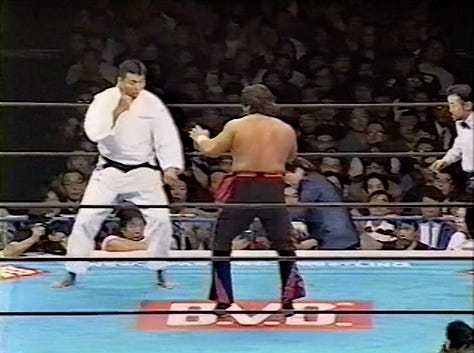
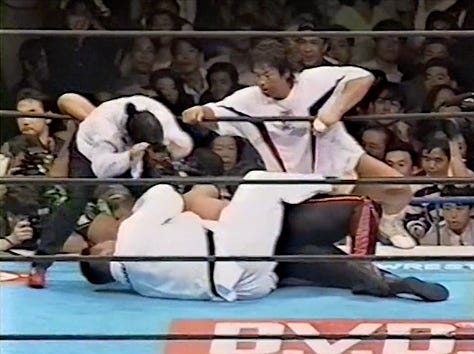

I thought this was very well done, especially given Ogawa’s lack of experience. Hashimoto led the way and built the drama very well. Ogawa comes off incredibly unlikeable but was very giving throughout.

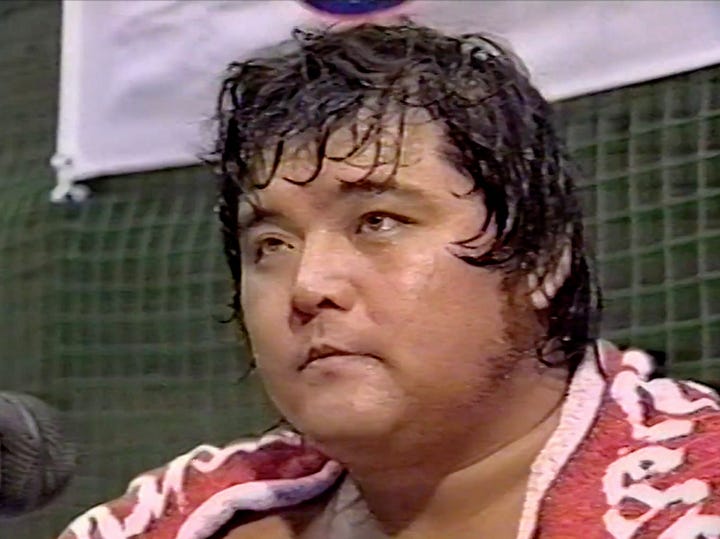
We get some of the post-match where Ogawa claims that it didn’t take him long at all. Hashimoto is disappointed, and all he has left is his IWGP Heavyweight Title. He asks the NJPW President for another match with the belt on the line. He’s emotional and conveys that very convincingly.
May 3, 1997 NJPW Strong Style Evolution In Osaka Dome: IWGP Heavyweight Title Shinya Hashimoto vs. Naoya Ogawa
It’s a quick turnaround since Hashimoto’s tearful request. Inoki oversees Ogawa’s preparation while Hashimoto vows to show him professional wrestling.
Ogawa comes out stronger this time but Hashimoto fires off shots to the body and the head. A hard leg kick registers and the crowd comes up. They want Hashimoto to beat this man. Ogawa gets the takedown and goes to the arm. When Hashimoto comes back, Ogawa once again bails out. The crowd isn’t rabid for this but they react big to any potential danger. Hashimoto draws Ogawa into a fist fight and hammers away. However, getting close to Ogawa is a constant problem as it opens Hashimoto up for trips and takedowns.
Like the first match, Ogawa goes for the choke but this time Hashimoto slips out! The crowd picked up on it. Hashimoto goes wild coming back from that and surprises Ogawa with a great spinning backfist then a takedown into a kneebar. Ogawa gets the STO again out of a the clinch and goes to the choke but Hashimoto is in the ropes. A great moment of near danger again. Ogawa takes his time releasing the choke which upsets the fans. Hashimoto lands an upkick, a big leg kick and kicks Ogawa in the face! The towel is thrown in for a great finish in 10 minutes and 20 seconds. Ogawa gets stretchered out and has a ice pack on his head for the post match interview. Inoki says this is a long journey. Whether Ogawa realized it or not, he’s a perfect bully heel in this scenario.
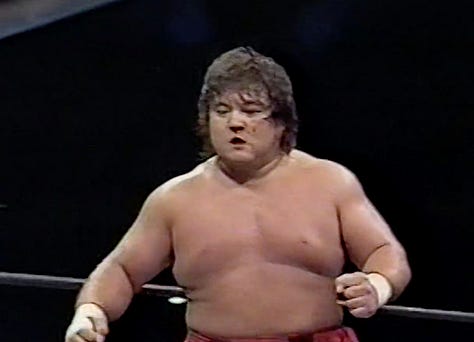
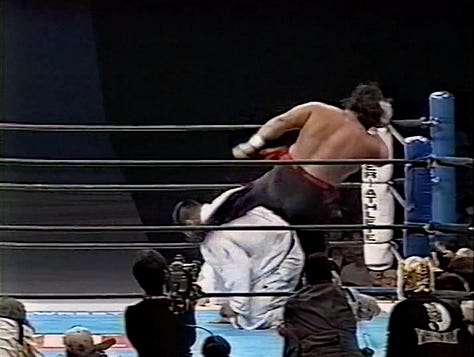

This one was good and I felt like they achieved what they were going for here. They got a few dramatic moments out of the rear naked choke until ultimately Hashimoto fired up and put Ogawa out.
It would be nearly two years before the Ogawa and Ashimoto would meet again. If they had left it there, it felt like a good piece of business to make up for not securing Shamrock. As an aside, what an interesting thing to ponder. It seems very likely that Ken Shamrock would have been IWGP Champion in 1997 if he had gone.
Ogawa was very green and his worked punches didn’t look that good but Hashimoto’s presence and smarts were able to carry things for two matches.
From there, Inoki would have Ogawa in a bunch of “Different Style Fights” in New Japan, often against MMA fighters who had crossed over like Don Frye, Dave Beneteau and Brian Johnston. Then in October of 1998, Inoki formed the Universal Fighting-Arts Organization or UFO with Ogawa as the centerpiece. That set the stage for the rubber match between Hashimoto and Ogawa as part of a series of matches between NJPW and UFO.
By this point, Hashimoto was no longer the IWGP Champion and there were reports at the time that he was having issues with NJPW. Reports say Hashimoto publicly criticized the company for plans to hold an IWGP contender tournament in February because it diminished the G1. NJPW responded by suspending him effective immediately after the Dome show.
January 4, 1999 NJPW Wrestling World In Tokyo Dome: Shinya Hashimoto vs. Naoya Ogawa
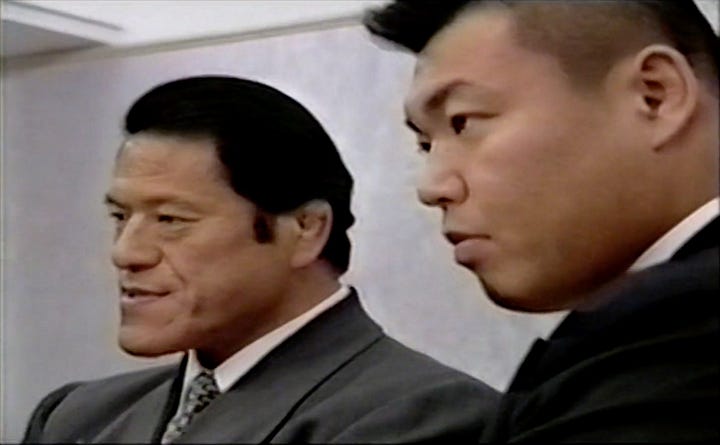
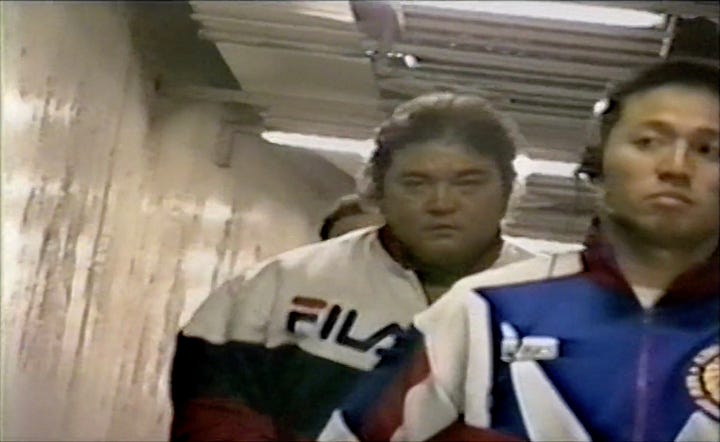
From the buildup, we see Inoki and Ogawa meeting with the press and then a confrontation at an event where Ogawa leaves without answering any questions. Hashimoto gives comments saying he’ll step in the ring and do something. Naoya Ogawa enters looking much different with no gi now and leaned out. Shinya Hashimoto has a great entrance again.

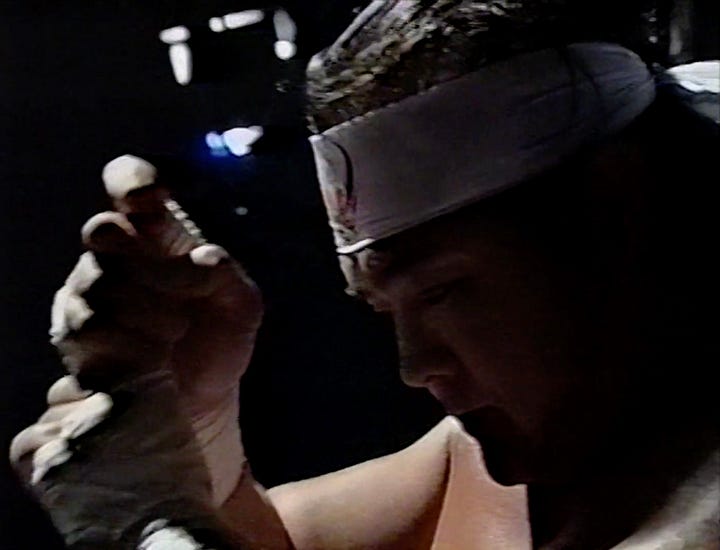
Ogawa gets on the mic before the match and starts talking trash. He’s noticeably amped up to a different degree than in their previous matches. The match starts and it’s clear Ogawa came in to strike this time. Hashimoto starts going for takedowns but he can’t budge Ogawa. It becomes instantly obvious that Ogawa isn’t here to work, and Hashimoto is no match for him in a real fight.
Hashimoto’s nose gets bloodied up. Ogawa gets the mount and lands some hard shots. The difference between these punches and his worked ones is night and day. Hashimoto manages to get the ropes during an armbar but he’s clearly just trying to survive. Ogawa keeps kicking at him and throwing shots. The best way I can describe Hashimoto is that he looks worried and he’s also gassed.
Ogawa is being crazy over-the-top disrespectful during the beating as well. Hashimoto gets to the ropes again but he’s getting absolutely worked. Ogawa is stomping on his head and flipping people off. The crowd seems more confused rather than putting heat on Ogawa. The UFO and New Japan guys start getting into it as Hashimoto is being checked on. The bell sounds and it’s a no contest in 6 minutes and 58 seconds.
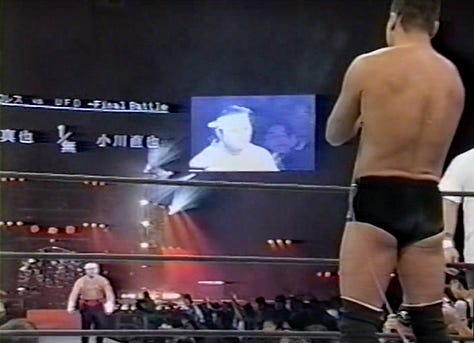
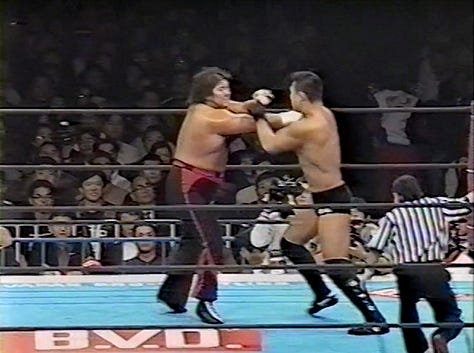

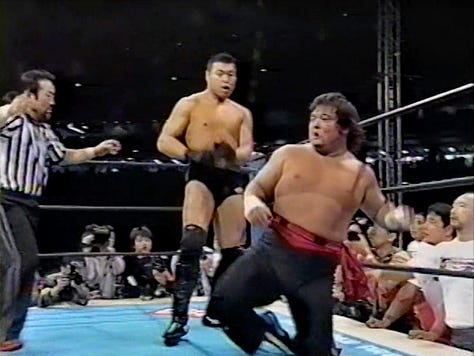
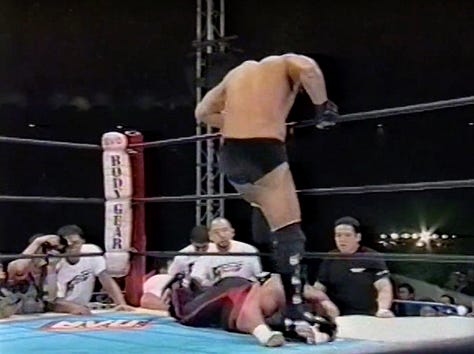

Ogawa starts flying around with his arms and being a complete prick. There’s a big faceoff after with the New Japan guys yelling at Ogawa. Chaos erupts when Riki Choshu, the booker a the time, hits the ring and starts moving people aside to get at Ogawa. Ogawa’s just sitting on the apron. He won’t hit Choshu in the confrontation and Hashimoto pulls Choshu away.

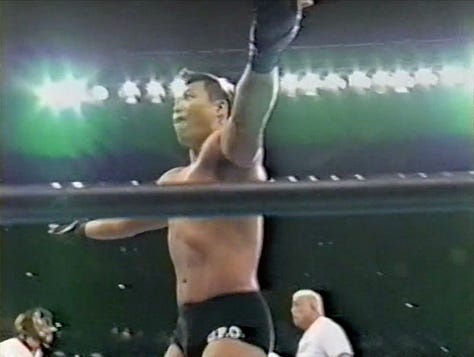

This was crazy to watch especially after seeing their two previous worked matches. It was clear from the outset that Ogawa was in fight mode and it made Hashimoto look really poor. In addition to all of that, it was also much less interesting of a match than their worked bouts.
We see a bit of the interviews from after with Hashimoto looking very upset. He says he won’t run away.
Naoya Ogawa would go on to win the NWA World Heavyweight Title from Dan Severn and worked quite a few dates around the United States. UFO ran events periodically but no longer had a relationship with New Japan. Ogawa would also win a fight in PRIDE against Gary Goodridge, although there was speculation on whether Goodridge took a dive or not. He maintains it was offered but he declined.
Antonio Inoki reportedly gave interviews complaining that NJPW had become too Americanized and that’s why he did the UFO thing to make NJPW better and more realistic. Despite it all, reports were that New Japan wanted the rematch at the Tokyo Dome in October.
In June 1999, Tatsumi Fujinami took over as President from Seiji Sakaguchi but it’s a figurehead position as Riki Choshu was still the booker behind the scenes. Speculation persisted that Hashimoto may have been told it was going to be a real fight beforehand but didn’t expect what he was going to happen.
I feel like even if they tipped him off, it was still a lousy thing to do, much like what would happen in years to follow with wrestlers like Yuji Nagata being sent to the wolves against Mirko Cro Cop and Fedor Emelianenko.
October 11, 1999 NJPW Final Dome: NWA World Heavyweight Title Match (Special Referee: Tatsumi Fujinami) Shinya Hashimoto vs. Naoya Ogawa (c)


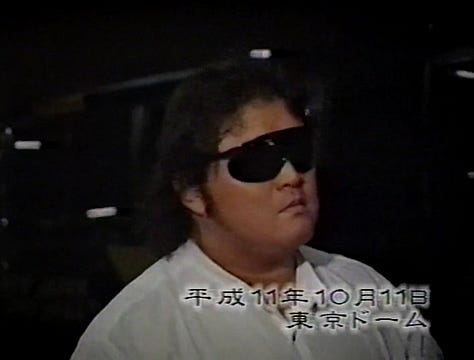
Hashimoto talks to the press saying that they’ll say what they need in ring and not in the media. He has no choice but to move forward while the press wants to know how it all started. Hashimoto seems conflicted, but he vows revenge. He struggled physically and mentally on his road back. We see clips of his comeback match against Genichiro Tenryu, which he lost but showed fire. Hashimoto doesn’t want to talk about the past but he can’t give up. They talk about the birth of the Fujinami administration that caused a sudden turn of events with Inoki. Naoya Ogawa says that Hashimoto got away last time and he wasn’t satisfied. We see Don Frye and Kazuyuki Fujita helping to train Shinya Hashimoto. An intense Hashimoto flips over a table on Ogawa at a press conference.
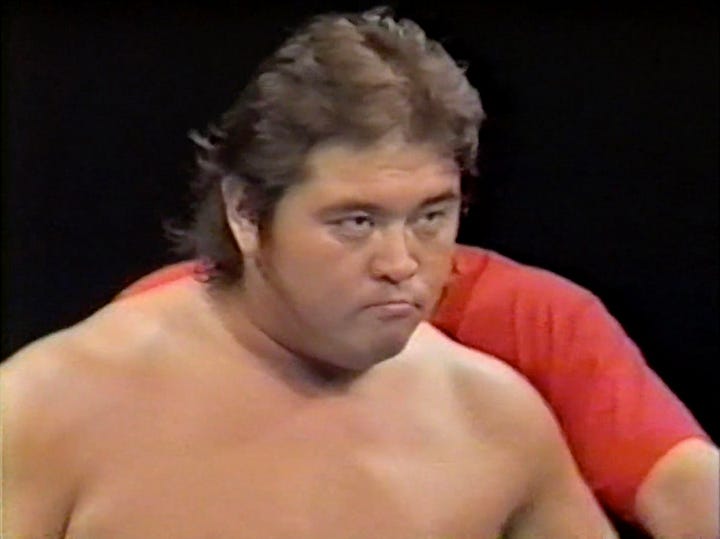
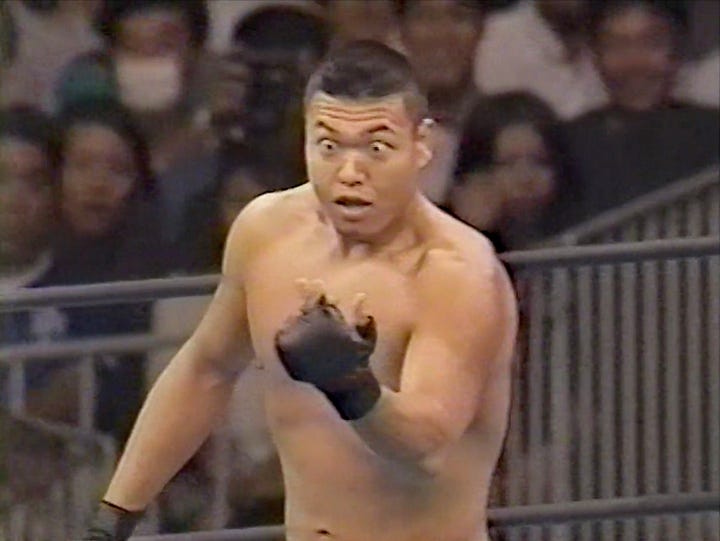
We arrive at the fourth battle. Hashimoto gets his usual big reaction and Naoya Ogawa draws boos. He gets Hashimoto down early and lands some palm strikes. It’s easy to see that this is cooperative but Ogawa is still bringing his wild energy and showing great natural heel instincts.
Hashimoto takes a step back and the crowd comes up huge. Ogawa slaps him a few times. Hashimoto’s so good at conveying his frustration, letting it build and then he unloads with a flurry of kicks and punches. The fans erupt. This is the benefit of cooperation. This is what Hashimoto was great at.
They go back and forth a bit and Ogawa still doesn’t quite know how to work punches very well. He does land one big one to the midsection and Hashimoto sells it great. There’s a tremendous almost deadlift backdrop driver. The crowd is hungry for Hashimoto to beat up Ogawa and he’s delivering. Ogawa gets on top during a scramble and goes the arm. His confidence is growing. He gets the STO and I just love how he does it.
Ogawa even kicks at the nose that Hashimoto had to surgically repair. Just an absolute prick. Hashimoto wills himself up and lands a hard leg kick that sends Ogawa scrambling. He’s good at selling those in a heelish way.
Ogawa lands another STO, a backdrop driver of his own, and continues with the STO’s. Hashimoto is defiant to the end, even taking off his gloves to pull himself up. I’m awestruck at the emotion Hashimoto is displaying. The will to keep going is there. The fans are with him. They draw this section out until finally Inoki gets in, shoves Ogawa down and calls it off at 13 minutes and 10 seconds.
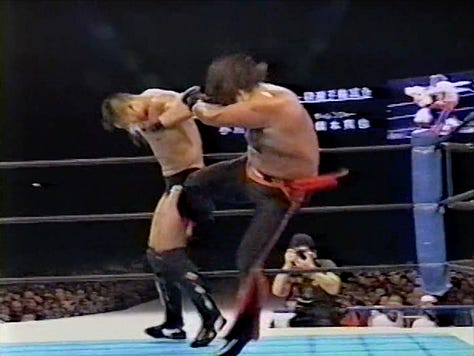
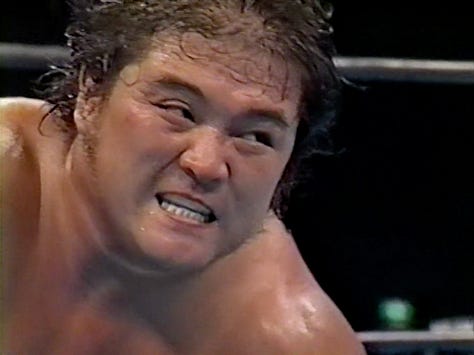
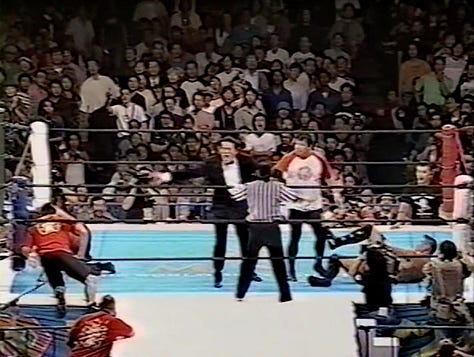
As a match, I thought this was great. The best of the bunch thus far and a testament to working over shooting in this scenario. Hashimoto being resilient and fighting back is what the New Japan fans clearly wanted.
After the match, we see Hashimoto get on the mic and bow to Inoki with Inoki embracing him. Hashimoto collapses and Inoki is crying. The fighting spirit tradition is established. In the back, Fujinami is crying as well. Inoki says he intervened because Hashimoto would have fought to the death. The safety of the athletes is the most important.
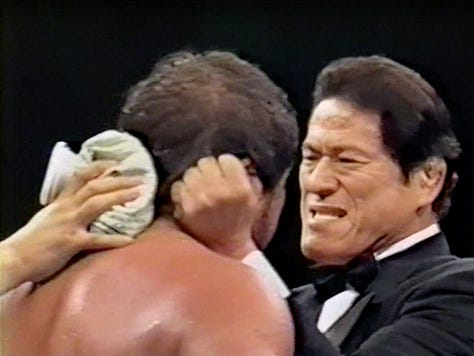
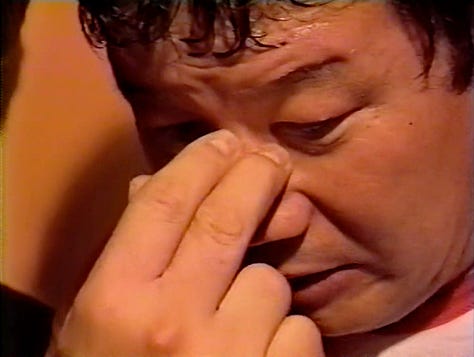
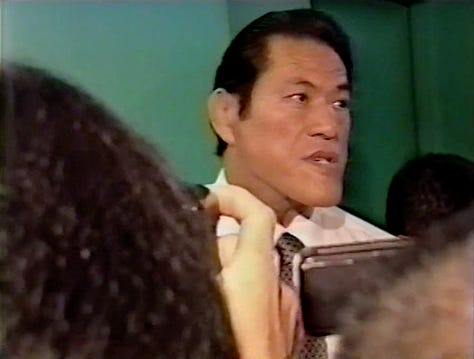
With two Dome shows lined up for early 2000, New Japan went back to Hashimoto and Ogawa. First, a tag team match on January 4th and then what would be the final singles match on April 7th.
January 4, 2000 NJPW Wrestling World In Tokyo Dome: Shinya Hashimoto & Takayuki Iizuka vs. Naoya Ogawa & Kazunari Murakami
Hashimoto speaks to the press about his friends being bothered again. He isn’t thinking about anything else right now. The voiceover says that Hashimoto faced the biggest crisis in his life as a wrestler after the Ogawa match. It was rock bottom. We then see clips of Kazunari Murakami jumping the apron at a New Japan show and making a challenge. That leads to a big pull apart with Naoya Ogawa strolling out to back him up. The crowd seemed very hot for this confrontation. President Tatsumi Fujinami grabbed them and sent them out of the ring.
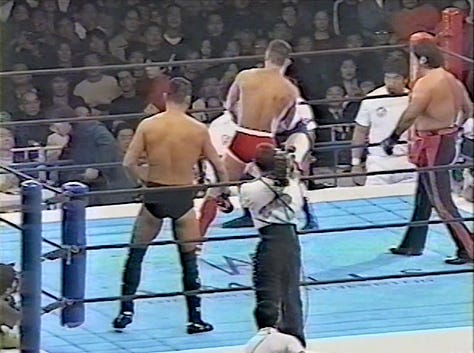

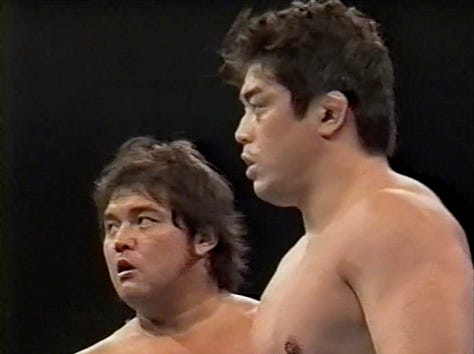
The match opens with Murakami kicking the hell out of Iizuka and grabbing the mic. Murakami gives off this great punk energy. Hashimoto responds by unloading on him and Ogawa comes in after him! A wild start and the crowd is going nuts for it. The corners come in and the bell sounds for a no contest. Hashimoto waves them all off. Fujnami and Inoki both come in and we have a restart!! Big dramatics. Murakami comes flying in with totally unhinged energy.
Iizuka manages to get an armbar to a huge pop. This is really good. There’s quite a bit of good work done by Murakami and Iizuka until Hashimoto comes in and kicks the crap out of Murakami. He calls Ogawa in to fight showing great emotion. Hashimoto pummels Ogawa, but Ogawa is able to hit some STOs to shut him down. I loved Iizuka flying in to help. It’s non stop fire. Hashimoto goes for a kimura on the outside while Iizuka ends Murakami with a rear naked choke to a big pop in 11 minutes and 29 seconds.
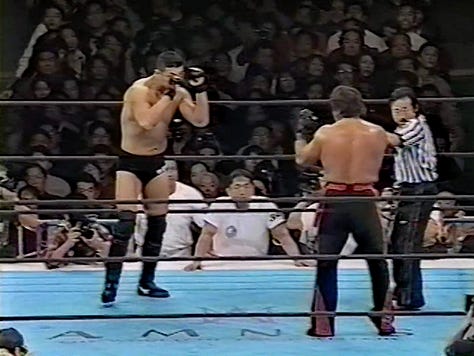
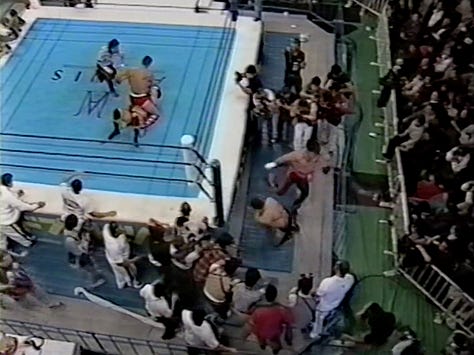
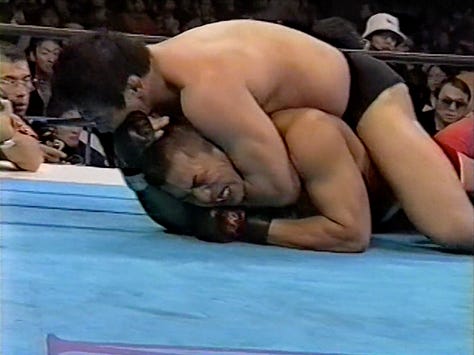
A great battle and the best match out of everything I watched for this.
After the match, Ogawa and Hashimoto pull apart. They talk to the press after and Hashimoto says he’s found the level of resolve he needs. They agree to fight one more time at the next Tokyo Dome show.
April 7, 2000 NJPW Dome Impact: Shinya Hashimoto vs. Naoya Ogawa
Antonio Inoki and Tatsumi Fujinami are both looking on. Shinya Hashimoto comes in clean shaven, slimmed down, with a buzzed head. He’ll retire from NJPW if he can’t beat Ogawa.
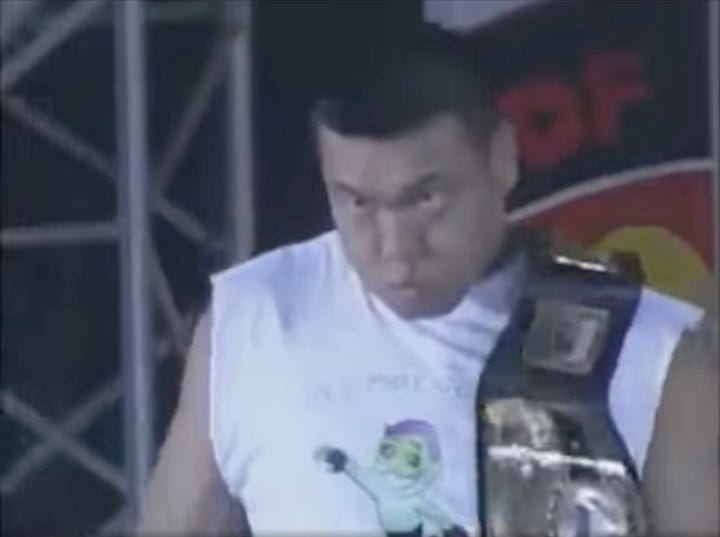
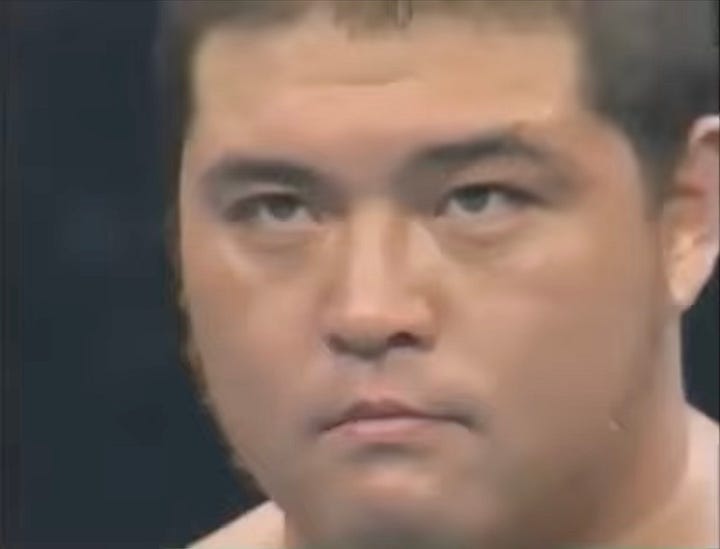
Ogawa drops Hashimoto with a few punches and the difference between work and shoot Ogawa is very clear. However, this is professional wrestling and what they do seems to be working very well for the crowd. Hashimoto gets a big leg trip coming in and goes to work. Murakami runs in to get at Hashimoto but Iizuka holds him off in a great sequence. They’re so good at creating the feeling that things could come unglued at any point. Ogawa’s reeling as Hashimoto kicks the hell out of him. Hash hits a DDT on the ramp in a big moment. He’s using pro wrestling!
Back in, Ogawa gets a trip to turn the tide. My favorite aspect of his work is how he uses the trips and STOs as cut offs. They look great. It builds to a moment where Hashimoto finally counters a STO with a DDT. The fans are electric in response. Hashimoto’s using more and more of his arsenal on Ogawa. Pro wrestling is winning out. Ogawa gets an STO but Hashimoto fires up. He’s trying to persevere but keeps getting put down by STOs. Finally Hashimoto is counted down and Ogawa is declared the winner in 15 minutes and 9 seconds.


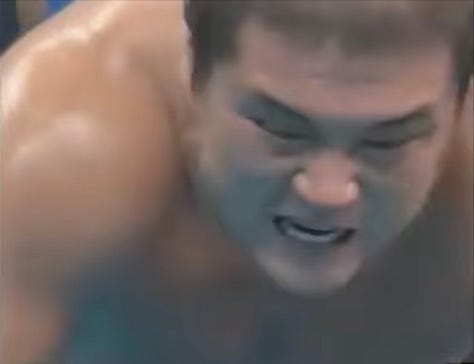


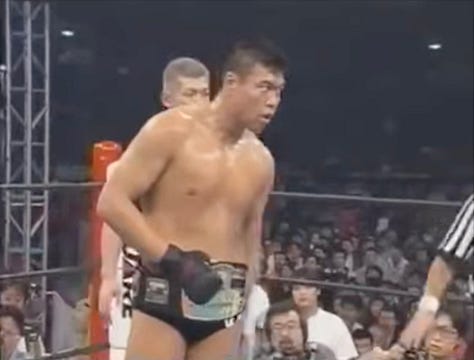
Another great worked match to close this out. Hashimoto time after time is able to provide the feeling and structure to maximize what Ogawa can bring.
After the match, Inoki shows respect to Hashimoto, who bows to the crowd. This is meant to be the end.
Shinya Hashimoto would return a few more dates for NJPW but that was it for him as a regular member of the roster. He would leave to start his own promotion, Pro Wrestling Zero-One. In a bit of a surprise, Naoya Ogawa would join him there and they’d often team up. Sadly, Hashimoto passed away at just 40 years old on July 11, 2005. Ogawa paid tribute to Hashimoto during his entrance at PRIDE Shockwave 2005.
Shinya Hashimoto’s son, Daichi, currently wrestles for Big Japan Pro-Wrestling. Naoya Ogawa would become a big centerpiece of the Hustle promotion that was a wild “sports entertainment” style promotion that used many fighters from Pride FC as well as wrestlers. Following his very wacky run in Hustle, Ogawa joined Antonio Inoki’s new IGF promotion where he’d stay for the rest of his career doing shoot-style pro wrestling.
Overall, I thought Hashimoto and Ogawa had a great dynamic and when they cooperated, Hashimoto was able to get the most out of what Ogawa had to offer. I came away impressed with how naturally unlikeable Ogawa was in the role and how much he embraced being the heel. A lot of his actual work like his punches wasn’t all that good but in some ways that just added to making him unlikeable.
This series reaffirmed my belief that shoot style wrestling is at its best when it’s about making a match FEEL real and not about simulating a real fight. It’s about using the trappings of a real fight to evoke emotion and create a sense of unpredictability. The Ogawa-Hashimoto series was incredibly entertaining to watch and definitely a unique time in New Japan Pro-Wrestling.
What To Watch:
Shinya Hashimoto & Takayuki Iizuka vs. Naoya Ogawa & Kazunari Murakami (Jan. 4, 2000 Wrestling World). The must-see tag.
Shinya Hashimoto vs. Naoya Ogawa (Apr. 7, 2000 NJPW Dome Impact). The great final singles bout.
Shinya Hashimoto vs. Naoya Ogawa (Oct. 11, 1999 NJPW Final Dome). Hashimoto’s comeback from the shoot.
Shinya Hashimoto vs. Naoya Ogawa (Apr. 12, 1997 NJPW Battle Formation). The better of the early two bouts that set the stage.
Shinya Hashimoto vs. Naoya Ogawa (Jan. 4, 1999 NJPW Wrestling World). The shoot match just to see it for context.
References:




